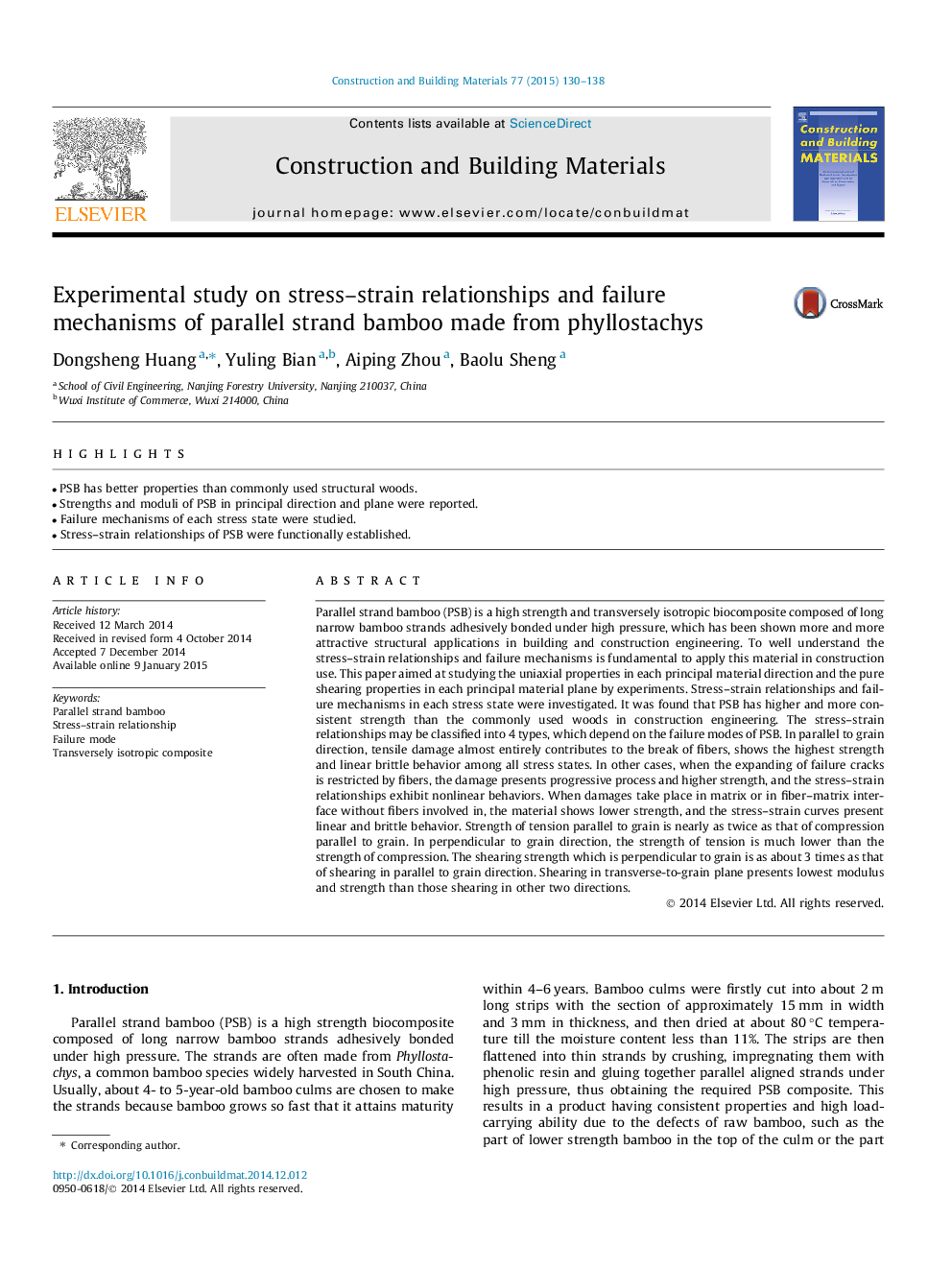| کد مقاله | کد نشریه | سال انتشار | مقاله انگلیسی | نسخه تمام متن |
|---|---|---|---|---|
| 6721446 | 503576 | 2015 | 9 صفحه PDF | دانلود رایگان |
عنوان انگلیسی مقاله ISI
Experimental study on stress-strain relationships and failure mechanisms of parallel strand bamboo made from phyllostachys
ترجمه فارسی عنوان
بررسی تجربی روی روابط تنش-تنش و سازوکارهای شکست بامبو موازی از فیولواستات
دانلود مقاله + سفارش ترجمه
دانلود مقاله ISI انگلیسی
رایگان برای ایرانیان
کلمات کلیدی
رشته موازی بامبو، رابطه استرس روابط، حالت شکست کامپوزیت برونزای ایزوتروپیک،
موضوعات مرتبط
مهندسی و علوم پایه
سایر رشته های مهندسی
مهندسی عمران و سازه
چکیده انگلیسی
Parallel strand bamboo (PSB) is a high strength and transversely isotropic biocomposite composed of long narrow bamboo strands adhesively bonded under high pressure, which has been shown more and more attractive structural applications in building and construction engineering. To well understand the stress-strain relationships and failure mechanisms is fundamental to apply this material in construction use. This paper aimed at studying the uniaxial properties in each principal material direction and the pure shearing properties in each principal material plane by experiments. Stress-strain relationships and failure mechanisms in each stress state were investigated. It was found that PSB has higher and more consistent strength than the commonly used woods in construction engineering. The stress-strain relationships may be classified into 4 types, which depend on the failure modes of PSB. In parallel to grain direction, tensile damage almost entirely contributes to the break of fibers, shows the highest strength and linear brittle behavior among all stress states. In other cases, when the expanding of failure cracks is restricted by fibers, the damage presents progressive process and higher strength, and the stress-strain relationships exhibit nonlinear behaviors. When damages take place in matrix or in fiber-matrix interface without fibers involved in, the material shows lower strength, and the stress-strain curves present linear and brittle behavior. Strength of tension parallel to grain is nearly as twice as that of compression parallel to grain. In perpendicular to grain direction, the strength of tension is much lower than the strength of compression. The shearing strength which is perpendicular to grain is as about 3Â times as that of shearing in parallel to grain direction. Shearing in transverse-to-grain plane presents lowest modulus and strength than those shearing in other two directions.
ناشر
Database: Elsevier - ScienceDirect (ساینس دایرکت)
Journal: Construction and Building Materials - Volume 77, 15 February 2015, Pages 130-138
Journal: Construction and Building Materials - Volume 77, 15 February 2015, Pages 130-138
نویسندگان
Dongsheng Huang, Yuling Bian, Aiping Zhou, Baolu Sheng,
